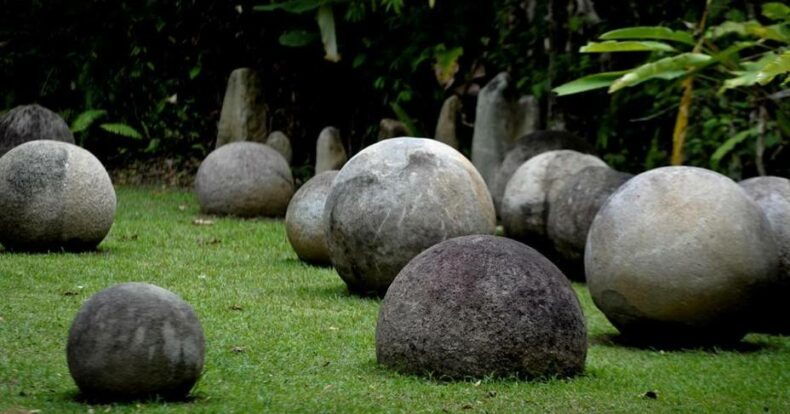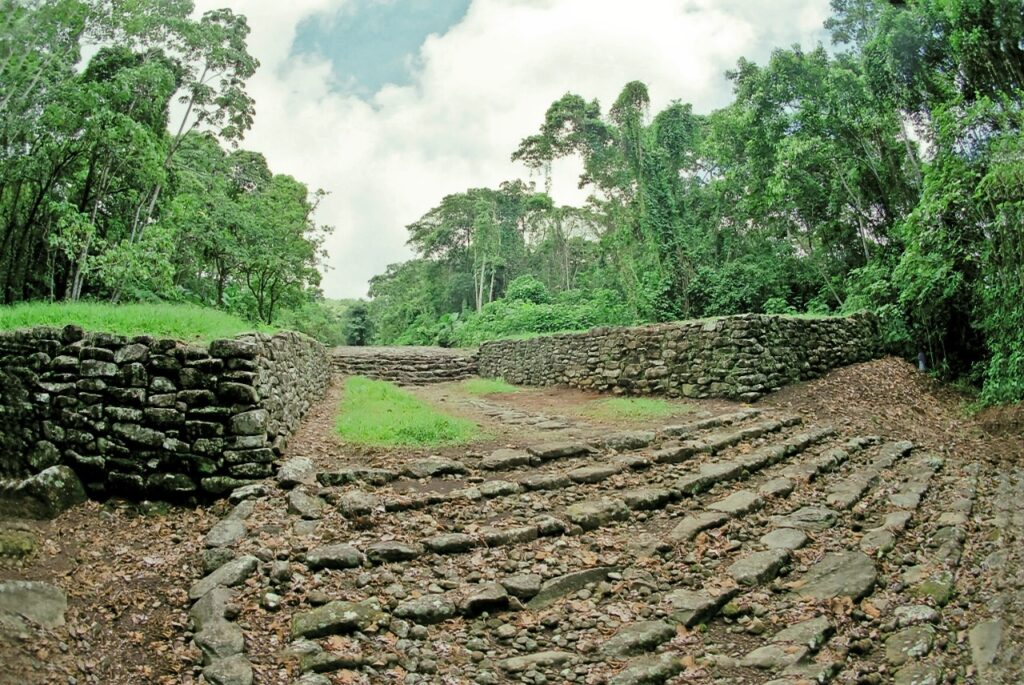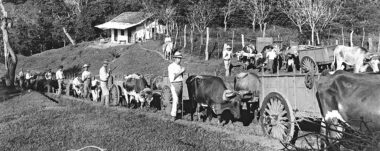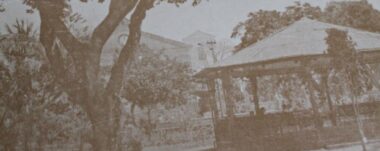Guayabo National Monument

photo: El País CR
Guayabo National Monument: the mystery of the stone spheres
Guayabo National Monument is a pre-Columbian settlement in Costa Rica. The site was inhabited by the pre-Columbian culture known as Guayabo. It is important to note that this culture was one of the few that had a writing system. That is, it is a site of archaeological interest in Costa Rica. It was declared a National Monument in 1937.
The site covers an area of about 10 square kilometers and has been estimated to have been home to some 3,000 people. The best known aspect of this site is its ceremonial center that includes an artificial platform, a ball game and other buildings with large plazas.
It also contains a series of stone spheres, the largest of which is about 3 meters in diameter. The spheres are scattered throughout the site. They are carved in granite and some have been polished to a high gloss.

Pre-Colombian Culture
Costa Rica has a rich pre-Columbian history that is at the heart of its cultural identity. Pre-Columbian cultures in Costa Rica are an important part of the country’s history and culture.
The first inhabitants of Costa Rica were indigenous tribes that migrated from South America some 12,000 years ago. The most recent indigenous cultures to inhabit Costa Rica were the Chorotega, Huetar and Nicoya. These groups lived on the coast and in small inland villages. They were mainly hunter-gatherers who lived on seafood, corn, beans, squash, pineapples and avocados. They traded with other Central American Indians for chocolate, vanilla beans and cotton.
The Diquís culture is one of those examples that can be found near the Pacific coast of Costa Rica and has been designated as a UNESCO World Heritage Site because it contains some of the most extensive archaeological ruins in Central America.
Guayabo National Monument is a pre-Columbian settlement in Costa Rica. It is important to note that this culture was one of the few that had a writing system.
The spheres
There is still much to learn about these mysterious stone spheres and the Diquis culture that created them, but it has become a major tourist destination for Costa Rica and Central America with its beautiful scenery, lush vegetation and rich history. In fact, the pre-Columbian spheres have been a national symbol of Costa Rica since 2014, when four Diquis stone sphere chiefdom settlements were declared a UNESCO World Heritage Site.
The site of Guayabo preserves a complex of stone structures made up of circular stone balls or spheres. The spheres are divided into three groups: one group with 27 spheres, another with 21 and the last with 8. These groups have different sizes and shapes, but they all have one thing in common: their spherical shape.
In the 1990s, the National Museum of Costa Rica developed the project “Man and Environment in the Diquís Delta”. The objective was to shed more light on the mystery of the spheres and their creators.
Current archaeological and anthropological evidence reveals: The stone spheres were built by a Native American nation. In fact, it is considered to have been installed and developed in the Diquis Delta since time immemorial. The human group responsible for the spheres was highly organized. The manufacture of spheres was carried out by means of ancestral techniques of grinding and polishing the rock. Their manufacture took place over an uninterrupted period extending over a millennium. The oldest spheres date from about 200 A.D. and continued until shortly before Spanish contact.
Moreover, the mystery behind the construction and purpose of these spheres has not yet been solved. Some people believe they were used as cemeteries, others believe they were used as ceremonial sites, while some think they are ancient observatories.
Author
Zelda Walters for Sensorial Sunsets
Sources
https://www.visitcostarica.com/es/costa-rica/blog/conoc%C3%A9-la-historia-del-monumento-guayabo
https://www.rupestreweb.info/esferas.html
https://www.ondauned.com/programa.php?ou=2685
http://www.sanchezlex.com/es/costa-rica/historia/el-periodo-precolombino/
Navigate articles





